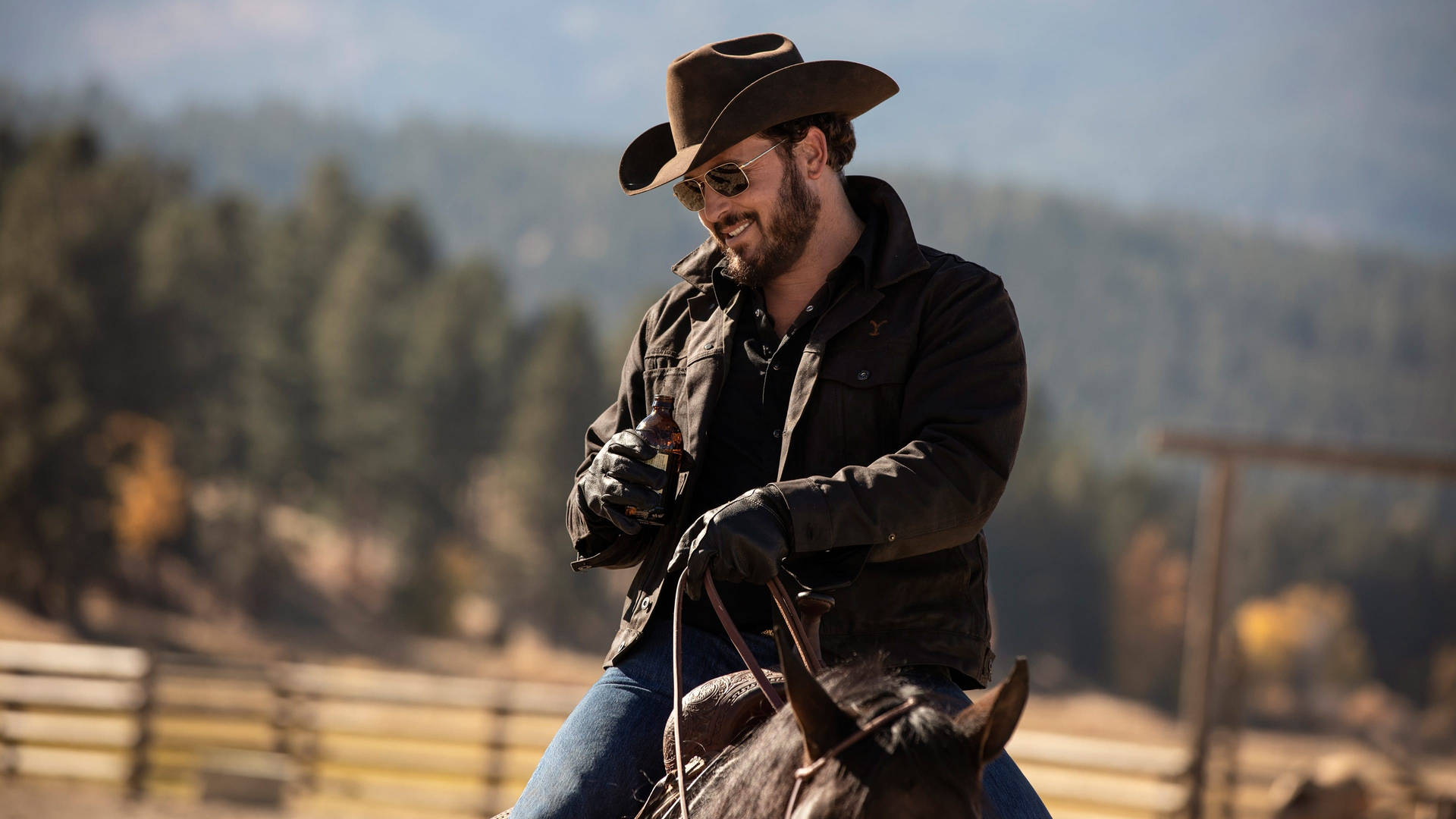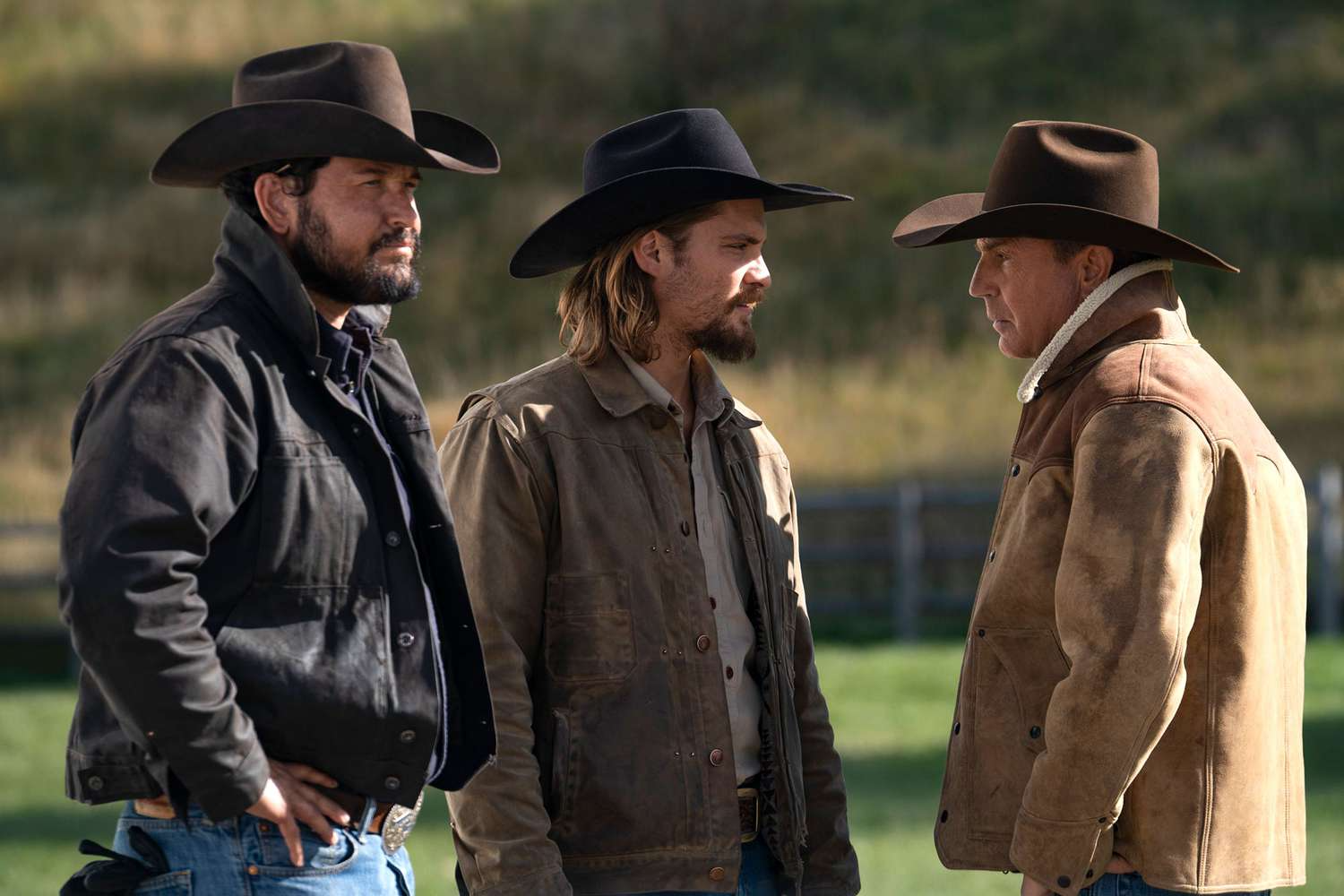
No, there wasn’t Kevin Costner as all-American anti-hero John Dutton, but Yellowstone featured many familiar sights and sounds as Taylor Sheridan’s epic neo-western saga built towards its conclusion. A final dead body taken to the “train station.” A country music concert in West Texas, horse and cow auctions, multiple final digs at ski resorts, condo owners and tourists, particularly from California, that are destroying Montana. Scantily clad women playing strip poker with ranch hands on the Four Sixes Ranch. Tons of cowboy hats. Beth Dutton drinking whiskey and yelling at everyone in sight.
Then came the stirring final scenes of Native Americans from the fictional Broken Rock Reservation chanting in a drum circle outside of what had been, until then, the historic Dutton family’s luxury log cabin at the center of the Yellowstone Dutton Ranch.
As native adults began deconstructing the Dutton home, Native children ran on the grounds made famous by the Dutton family and its ranch hands. Other tribal members performed traditional cleansing ceremonies on the property as they prepared to return the beautiful landscape to the way it looked when the first Dutton settlers initially encountered the region’s indigenous population in the late 1800s. Leave no trace, as they say.

It was a hell of a historic way to end one of the most popular cable television programs in history. The final scenes were perhaps the most significant mainstream portrayal of the growing Native American “Land Back” movement ever portrayed on entertainment television. Meanwhile, earlier in the episode, the fictional Broken Rock Indians, the same tribe that took over the Dutton property, rebelled against a pipeline near and under their land, recalling the Dakota Access Pipeline battle in South Dakota led by the Standing RockSioux Reservation in North Dakota, a yearslong fight that, in the real world, concerns land just 500 miles to the East of Bozeman, MT.
A recent episode in the final block was “Counting Coup,” a Native tradition in the Northern Plains of dominating an enemy in battle through acts of bravery but not killing. A wolf, perhaps the most mythical animal in native traditions, appears throughout the final season
Yes, Yellowstone went out with a bang with final episodes chock full of the Western cliches, Native symbolism and unexpected idiosyncrasies and complexities that have made the show an entertainment behemoth that has spawned multiple prequel spinoffs and, now apparently, multiple sequel spinoffs to come, too, along with cookbooks branded merch, and Dutton Ranch drink glasses and welcome mats. Yellowstone is dead, long live Yellowstone!
Those who haven’t followed the Yellowstone drama closely, either on screen or off-, might be a bit surprised that the fictional indigenous population of the Paradise Valley near Bozeman came out ahead at the end of a program that was supposed to be part of a franchise that was “anti-woke” and that only appealed to the white rural and small town viewers that initially embraced the show when it first hit the small screen in 2018. Clearly the surprising finale annoyed some of them
Yet Sheridan always scoffed at those critics who dismissed Yellowstone as only red meat for red America. He often pointed to his Native characters and storylines throughout his Yellowstone universe to show that he had a broader view than some critics and naysayers ascribed to him. And, indeed, native storylines have been a hallmark of the entire Yellowstone series to date, including powerful and painful scenes from the Native boarding school era in 1923, the second prequel in the Yellowstoneverse that will return for its second season in February.
For those who have followed this television saga over the years, the ending wasn’t a total shock. In fact, Yellowstone’s finale connects directly with the finale of 1883, the first prequel that showed how the Duttons first arrived in Montana. In the concluding episode of that series, famed Native actor Graham Greene plays Spotted Eagle, a Crow elder who helps the Dutton family settle in Montana (They filmed many of the native scenes in Yellowstone on the Crow Reservation in central Montana).
He suggests to James Dutton that he locate his family in the Paradise Valley; James takes his advice and the Dutton family then ends up making a home there for over 140 years. Spotted Eagle does note, however, that “in seven generations, my people will rise up and take it back from you.” James Dutton responds in a way that clearly foretold how the series might end: “In seven generations, you can have it!”
In the leadup to the finale, Yellowstone fans and critics offered many predictions on how, if at all, Sheridan would follow through on this give and take in 1883 and whether John’s Dutton’s grandson Tate, a bi-racial teenager whose mother was part of the Broken Rock Tribe and whose father was John’s youngest son, would somehow take over the ranch at the end.
Instead, because they couldn’t afford the inheritance tax on the land but wanted to keep the Dutton commitment to protect jt, John’s son Kayce and daughter Beth sell their ranch to the Broken Rock Reservation at the same value cost per acre ($1.25) as in the late 1800s when the Duttons first arrived. Given the rapid development in the Paradise Valley area, the Dutton children left billions on the table. In presenting the check, Broken Rock Tribal Chairman Thomas Rainwater notes to Kacey, “Congrats on making the worst land deal since my people sold Manhattan.”
In selling their huge property, the only stipulation the Duttons have is that no one can develop their land. This not only screws over the private equity vultures circling the ranch in the hopes of turning it into a resort or condo complex, it also honors the Dutton family’s legacy as protectors of the property, a major theme of the series. When John Dutton ran for Governor in Season 4, one of his key electoral taglines was “For the Land.” The deal that the Dutton children make fulfills this gubernatorial promise. Governor Dutton couldn’t keep the commitment himself, however, because they killed him off in the first of the six final episodes of Yellowstone, the ridiculous fallout from a long off-screen battle between Sheridan and Costner.
So, more than six years later, after all the debates and discussions that Yellowstone inspired on editorial pages and big think pieces about red America, the disappearance of the cowboy way of life, masculinity, hard labor, fatherless men, femininity, violence, and who belongs in places like Montana, Yellowstone ends not by making any specific statement about the future of America at this divided time, but by making a powerful one about the past. This is different kind of past than the one politicians spout, one that values the land and those who take care of it, including the indigenous population.
If anything, it’s a message steeped in the values of the Western part of America, where fights about land are about more than just money. If there is one narrative theme that is consistent with Sheridan across all of his work, it is his commitment to telling stories by and about the America West of the Mississippi, a landscape as inspirational as it is confusing and complicated. In returning the Dutton land to its original indigenous inhabitants while the living Dutton children ride off into the sunset, Sheridan makes one thing clear: how America settled its West still matters. The future can wait.
